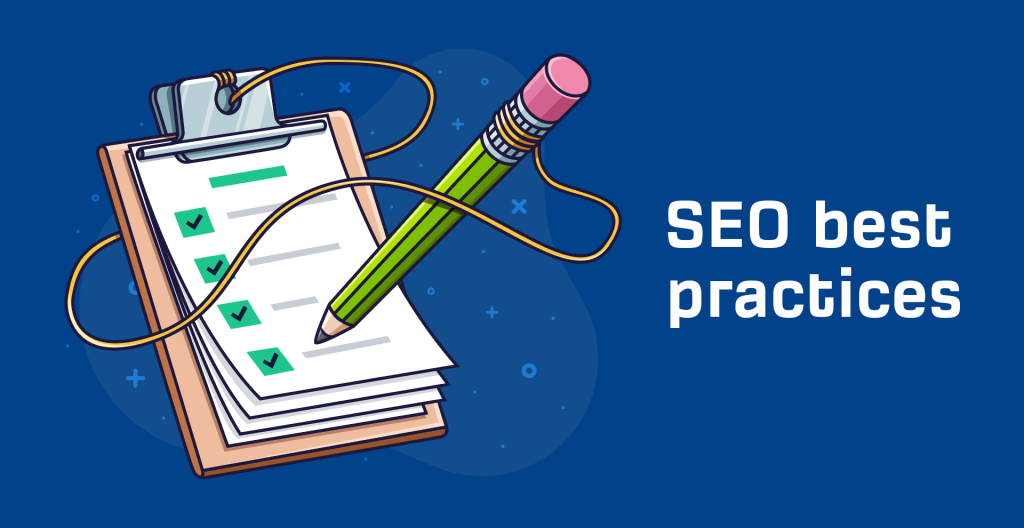
Whether website development or mobile app development both need SEO optimization. And both are linking to SEO as SEO has become more intelligent. Thus, experts in both fields need a basic understanding of the other.
Today, I’m talking to web developers. While you can leave the specifics to SEO experts, the best practices I’ll talk about in this piece can help you communicate with your team, enhance your brand image, and provide better services to your customers. Huh. In this post, learn the 8 best SEO best practices for developers.
What Do Developers Need To Know About SEO?
SEO experts should consult web developers during development, in the same way, web developers should consult SEO experts when looking at certain things like conversion rate optimization (CRO). Only a healthy relationship between web developers and SEO will create a better and more successful experience for the client.
Because if you feel you are responsible for building and maintaining a website, you are also responsible for making sure it ranks in search engines. SEO is often broken down into three categories:
Technical SEO– How search engine bots crawl and index a website. i.e. Technical SEO is a field of SEO that covers optimization that improves search engine ranking by making your site easier for search engines to crawl. For example, improving site load times, checking robot.txt files, and making redirects work in a proper manner.
ON-Page SEO– How well the content on the site is optimized for target keywords and user experience. i.e. On-page SEO is all about creating content to improve your rankings. It comes down to including keywords in your pages and content, writing high-quality content, ensuring that your meta-tags and titles are keyword-rich and well written, among other factors.
OFF-Page SEO– How other websites link to your website to boost its authority. i.e. Off-page SEO is optimizing your website itself, such as earning backlinks. This part of the equation involves building relationships and creating content that people want to share. Although it takes a lot of hard work, it is an integral part of SEO success.
Developers play a big part in technical SEO, but this isn’t where SEO for developers should end. They also help ensure a positive user experience, which can help with on- and off-page SEO.
Here are the 8 Must-Know SEO best practices for developers

1. Keep Your Code Clean
Clean code is a reader-focused development style that creates software that is easy to write, read, and maintain. Often, tempted to get your work done when the application operates as expected. But we are not just writing code for computer consumption. Clean Code is about recognizing that your audience is not just a computer, but real human beings!
Web developers can do a lot of complex things, but it pays off to keep things simple more often. Consumers value convenience more than almost anything else. We want quick access to information, and anything that gets in the way hurts the user experience. More complex code can cause more barriers to site visitors.
So Keeping your code clean is one of the first steps in SEO for developers. When people visit a website, they make quick-fire decisions about whether it’s worth the effort.
Here’s why keeping your code clean matters:-
- It’s fundamental. Clean code principles lead to source code that’s modular and thus easier to read and test.
- Reading is hard.
- Technical debt is depressing.
- No one wants to be a verb.
- Conventions.
- 360 no scope.
- Say what you mean.
- Whitespace is a nice space.
2. Keep Load Times Fast
Building to the point of complex code: Load time is critical to SEO. Search engines want to direct users to websites that provide quick and accurate answers to their questions.
If another website can provide comparable information twice as fast as yours, Google will rank them on search engine results pages (SERPs).
Another reason page speed matters are because it can affect consumers’ perception of your brand. When Google sees people coming back to search results, it thinks that your page is not valuable and offers little ranking power.
Here Are 9 Quick Ways To Improve Page Loading Speed:-
- Choose a performance-optimized hosting solution.
- Compress and optimize your images.
- Reduce your redirects.
- Cache your web pages.
- Enable browser caching.
- Use asynchronous and defer loading for your CSS and JavaScript files.
- Minify CSS, JavaScript, and HTML.
- Leverage a content delivery network (CDN).
- Cut unnecessary plugins.
3. Use The Correct Redirects
Websites are evolving, And that’s why the end-users and their expectations are also increasing.
The end-user is the most critical factor in this equation because anything you do has to work for them. But, you’ve also got to think about how the crawlers view your website. This is where it’s essential to understand how redirects work in SEO.
The two most used redirects are 301, 302.
A 301 redirect indicates to the search engines that a website or pages have moved in permanent manner. When you use a 301 redirect, the search engines will transfer most of the original page’s link equity to the new page.
A 302 redirect, on the other hand, indicates that a page has moved in temporary manner. You might use this when you’re redesigning or updating your site, but you still want to keep the original page’s link equity.
Some people think that the whole redirect thing is bad for SEO. NO Redirects are not bad for SEO, but — as with so many things — only if you put them in place correct. A bad implementation might cause all kinds of trouble, from loss of PageRank to loss of traffic. Redirecting pages is a must if you make any changes to your URLs.
4. Add A Sitemap
Search engines are very sophisticated, but they don’t perceive websites like humans. They want you to give them clues about how the pages link together, and one way to do this is with your sitemap.
search engines should be able to crawl your entire site if you use indexing in your site, bots follow every link to see where they lead. You can help with this process by adding a sitemap.
Google and other good internal linking. However, large sites can be complex, so a sitemap simplifies things for search engines and ensures that your site will be on the index.
5. Make Sure The Site Works On Mobile
Mobile devices account for 54.8% of website traffic. Google knows this, so it prefers websites that provide an excellent mobile experience.
Google now uses mobile-first indexing, which means Google uses the mobile version of the content for indexing and ranking. so when bots crawl your site, they use the mobile version. If your website doesn’t perform on mobile devices, it’s unlikely to rank highly on SERPs. Even today, too many websites neglect this vital fact.
Google’s mobile-friendly test is a convenient option, To check how your website performs for mobile. The Google Mobile-Friendly Test is a tool that allows companies to type in their URLs and find out how mobile-friendly Google considers their sites to be. It gives you a quick performance check and tells you where you can make improvements. And If you want to delve a little deeper, Google Lighthouse is also a great choice for UX.
6. Check The Robots.txt File
Access on your site. It is used to avoid overloading your site with requests; This robot.txt file tells search engine crawlers which URLs the crawler can is not a mechanism to exclude a web page from Google. To keep web pages out of Google, block indexing with no index or password-protect the page.
The robots.txt file sets the rules for how web crawlers crawl different parts of a website. It’s a simple piece of code, but it can have a significant impact.
A robots.txt file blocking crawlers from content can be disastrous for SEO. If bots can’t crawl the page, it won’t be indexed—that is, it won’t appear in search results.
Robot. txt is one of the simplest files on the website, but it is also one of the easiest files to mess with. One character out of place can wreak havoc on your SEO and prevent search engines from accessing important content on your site.
7. Ensure Follow/No Follow Links Used Are Appropriate
Links are like the language of search engines, so you need to be able to speak it. One difference to be aware of is follow links versus no-follow links.
Follow links, also known as do-follow links, are backlinks where the person linking to the page does not edit the HTML to ensure that Google does not associate their site with any others. When a site provides a clean backlink without any changes, the crawler sees it as a page that confirms the quality of the other.
From an SEO standpoint, you want to follow your links from official websites.Yet, you should still consider no-follow links valuable. Even if the link itself doesn’t allow it, it can still drive traffic to or from your site.
For developers, this means that they have to make sure they are using the correct links to properly communicate with the crawler.
8. Understand And Put In Place Structured Data
Within the world of SEO, there is structured data markup that helps search engines understand how to interpret and display content. The site Schema.org has a standardized list of markup that the major search engines — Google, Bing, Yahoo, and Yandex — have agreed to support.
Structured data can be tricky for many people involved with SEO…and this is where developers can shine.
When used well, structured data lets Google know what’s on each part of a webpage. Plus, it can tell Google exactly what questions you’re answering. So,
Get in touch with us for more SEO tips.
In addition, follow us on Linkedin to get all the recent updates. https://in.linkedin.com/company/take-2-technologies